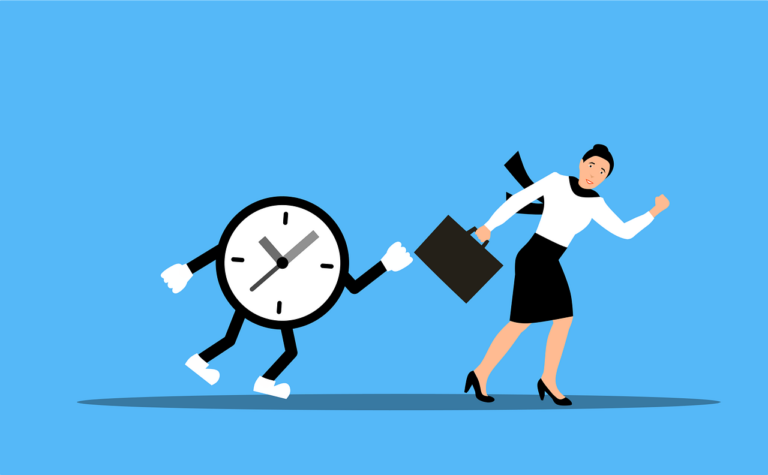What is GTD and using Technology to start
What is GTD?
GTD, or Getting Things Done, is a highly acclaimed personal productivity methodology developed by David Allen. It provides a systematic approach to managing tasks, projects, and information overload, enabling individuals to achieve stress-free productivity. GTD emphasizes capturing all commitments and ideas into an external system, such as a task list or digital tool, instead of relying on memory. It involves breaking down projects into actionable tasks, organizing tasks by context and priority, regularly reviewing and updating lists, and taking immediate action on tasks that can be completed in two minutes or less. The key elements of GTD include collecting all inputs, clarifying what needs to be done, organizing tasks by project and context, reviewing and updating regularly, and engaging in focused execution. By implementing GTD, individuals can gain a complete overview of their commitments, reduce cognitive load, and improve time management skills, all leading to increased productivity and a sense of control over their work and life.
Benefits of GTD
GTD, or Getting Things Done, is a popular productivity system developed by David Allen. Its purpose is to help individuals achieve stress-free productivity by effectively managing tasks and responsibilities. By adopting GTD, individuals can experience a multitude of benefits that enhance their productivity and reduce stress levels.
One of the key advantages of GTD is improved organization. The system provides a structured framework for managing tasks, projects, and reference materials, ensuring that nothing falls through the cracks. With clear guidelines for capturing, categorizing, and organizing information, individuals can stay on top of their commitments.
GTD also enhances clarity of priorities. By regularly reviewing and updating task lists and project lists, individuals gain a complete overview of their current projects and actions. This enables them to make informed decisions about what needs to be done next and prioritize tasks effectively.
Moreover, GTD aids in time management. With GTD, individuals can break down multi-step projects into actionable tasks, helping them allocate time to relevant projects and complete them efficiently. Additionally, by capturing non-actionable items and defining the next actionable step, individuals can avoid procrastination and keep their momentum going.
By implementing GTD, individuals can free up mental space and minimize cognitive load. The system provides a structure for storing reference materials, organizing waiting-for items, and planning regular reviews. This allows individuals to focus on the task at hand without being overwhelmed by mental clutter.
In conclusion, GTD offers numerous benefits that improve productivity and reduce stress. Through enhanced organization, clearer priorities, and effective time management, individuals can free up mental space and achieve greater focus and effectiveness in their work.
Technology Tools to Implement GTD
When it comes to implementing the GTD method, there are various technology tools available to help streamline the process and enhance productivity. Here are some essential tools:
1. Capture App: A good capture app allows you to quickly capture tasks and ideas that come to mind, ensuring that nothing gets overlooked. Examples include Todoist, Evernote, and Things.
2. Project Tracker: A project tracker tool helps you keep track of your ongoing projects and their progress. It allows you to break down projects into smaller tasks and track their completion. Tools like OmniFocus and Asana are excellent options in this category.
3. Next Actions Tracker: To ensure you stay on top of your next actions and prioritize effectively, a next actions tracker is crucial. Apps like Todoist and TickTick enable you to manage and update your actionable tasks.
4. Reference Material App: GTD emphasizes having a system to store and organize reference materials. Tools like Evernote and Microsoft OneNote allow you to keep all your important information, documents, and resources in one place for easy access.
5. Calendar App: A reliable calendar app helps you manage your schedule and deadlines, ensuring you allocate time for relevant tasks and projects. Popular calendar apps include Google Calendar, Microsoft Outlook, and Apple Calendar.
It’s worth noting that some tools, such as OmniFocus and Notion, can handle multiple functions mentioned above, making them versatile choices for implementing the GTD method. By leveraging these technology tools, you can effectively implement the GTD principles and enhance your organization and productivity.
Collecting Tasks & Projects
Collecting Tasks & Projects:
One of the key principles of the Getting Things Done (GTD) methodology, developed by David Allen, is the effective collection of all tasks and projects. This practice ensures that nothing slips through the cracks and allows for a comprehensive overview of all commitments and responsibilities. In order to implement this principle, there are several tools and strategies that can be utilized. A capture app, such as Todoist or Evernote, allows for the quick and easy capture of tasks and ideas as they come to mind. A project tracker, such as OmniFocus or Asana, assists in breaking down larger projects into smaller tasks and tracking their progress. A next actions tracker, like Todoist or TickTick, helps prioritize and manage actionable tasks. Additionally, having a reference material app, such as Evernote or Microsoft OneNote, aids in the organization and access of important information and documents. Finally, a reliable calendar app, such as Google Calendar or Microsoft Outlook, ensures that deadlines and schedules are properly managed. By utilizing these tools and strategies, individuals can effectively collect and manage their tasks and projects, leading to increased productivity and reduced stress.
Capturing Ideas & Tasks
Capturing Ideas & Tasks with Technology Tools
In today’s fast-paced world, it is essential to have effective methods for capturing ideas and tasks to stay organized and productive. Technology tools provide a convenient and efficient way to accomplish this. Here are the steps to capture ideas and tasks effectively using technology tools:
1. Utilize an Inbox or Task Manager: Immediately add ideas and tasks to your inbox or task manager to ensure they are not forgotten. This way, everything is centralized and easily accessible.
2. Todoist: One popular app for capturing ideas and tasks is Todoist. It is available across various devices, including computers, phones, and web browsers. Moreover, Todoist offers extensions and plugins, allowing you to add tasks directly from emails and websites, ensuring nothing slips through the cracks.
3. Quick Completion of Tasks: It is essential to prioritize and complete tasks promptly. If a task takes less than two minutes to complete, do it right away. This approach saves time and avoids accumulating small tasks that add up.
4. Delegate Tasks: If a task falls outside of your responsibilities or expertise, delegate it to the appropriate person. Effective delegation allows you to focus on your core responsibilities and ensures tasks are completed by the right individuals.
Incorporating these steps and technology tools into your workflow will help you capture ideas and tasks efficiently, improving your productivity and organization. Embrace the convenience of technology to stay on top of your tasks and responsibilities.
Creating a Master List of Projects
In order to stay organized and ensure that no projects are forgotten, it is important to have a master list of all the projects that require more than one action to complete. Creating a “Projects List” allows you to have a complete overview of all your ongoing projects and helps you track their progress effectively.
On the Projects List, include project titles, descriptions, and if desired, their intended outcomes. This provides you with a clear understanding of each project and allows you to prioritize them based on their importance and deadlines.
During regular reviews, make sure that there is always at least one action on the “Next Actions List” corresponding to each project. This ensures that progress is continuously made on each project and prevents them from slipping through the cracks.
By having a master list of projects and ensuring that there are actionable steps planned for each one, you can easily track their progress, prevent projects from being forgotten, and stay on top of your workload. This level of organization and accountability is essential for successful project management and overall productivity.
Identifying the Next Actions for Each Project
To effectively manage your projects and ensure progress, it is important to identify the next actions for each project. The next actions are the clear, concrete tasks that you will do at the next opportunity to move the project forward. Here’s how you can easily identify and manage the next actions for your projects:
1. Tag the next actions: In your task manager, create a new label or tag called “@next.” As you review each project on your project list, identify the specific tasks that need to be done next and tag them with “@next.” This will make it easy for you to distinguish next actions from future actions.
2. Maintain at least one next action per project: During regular reviews, go through your project list and ensure that there is always at least one next action tagged with “@next” for each project. This ensures that you always have a clear action step to take, preventing projects from stalling or being overlooked.
3. Focus on concrete actions: When identifying next actions, be specific and focus on tangible tasks that can be completed. Avoid vague or ambiguous tasks and instead break them down into smaller, actionable steps. This will help you make progress and maintain momentum on your projects.
By following these steps and actively managing the next actions for each project in your task manager, you can ensure continuous progress and stay on track with your goals. Keep your project list updated and regularly review and adjust the next actions as needed to stay organized and productive.
Organizing Your Tasks & Projects
Effective task and project management is crucial for staying productive and achieving your goals. One popular method for organizing tasks and projects is the Getting Things Done (GTD) approach developed by productivity expert David Allen. GTD provides a systematic framework for capturing, organizing, and prioritizing tasks and projects, ensuring that nothing falls through the cracks. The key to GTD is breaking down your tasks and projects into actionable steps and maintaining a clear overview of what needs to be done next. In this article, we will explore some practical strategies for organizing your tasks and projects to maximize your productivity.
Sorting Items into Relevant Categories and Contexts
Sorting items into relevant categories and contexts is an essential step in organizing tasks and projects effectively. It allows you to easily find and prioritize your actions based on their nature and requirements.
One way to categorize your tasks is by using the concept of contexts. Contexts are tags that indicate where or with what equipment a task can be completed. For example, you can tag actions as @home, @computer, or @office. This helps in grouping similar actions together and tackling them efficiently when you are in the respective environment.
To sort your items into relevant categories and contexts, start by making a list of all your tasks and projects. Then, review each item and determine its appropriate context based on location or equipment needed. This will enable you to easily identify which actions can be accomplished in a specific setting or with specific resources at hand.
In the digital age, electronic list managers offer smart lists or location awareness features that can present actions based on your current context. This means that when you are in a particular location or using specific equipment, your task manager will show you the relevant tasks to be completed in that context.
Sorting items into relevant categories and contexts is a strategic approach that helps in streamlining your workflow and increasing productivity. By tagging actions appropriately and utilizing smart lists, you can efficiently organize and prioritize your tasks, ensuring that you focus on the most relevant actions at any given time.
Making a Referenced System for Your Information
Making a referenced system for your information is essential for effective organization and quick retrieval of important data. With the help of technology tools, this process can become much easier and efficient. Here are some steps to create a reliable referenced system using technology:
1. Organize digital files and documents: Start by sorting your digital files into folders and subfolders based on their content or purpose. This hierarchical structure will allow you to locate specific information more easily.
2. Utilize tags or labels: Use tags or labels to categorize your files and documents further. These tags act as keywords that can be attached to multiple files, making it easier to find related information across different folders.
3. Create a centralized database: Establish a centralized database or knowledge base where you can store all your important reference material. This could be a cloud-based storage platform or dedicated software tailored to your needs. Ensure that it supports easy search and retrieval functions.
4. Use search functions and advanced filters: Take advantage of the search functions and advanced filters provided by your technology tools. These features allow you to quickly locate specific information within your referenced system, saving valuable time and effort.
By following these steps and leveraging technology tools, you can create a comprehensive referenced system that streamlines information management and enables effortless access to critical data as and when needed.
Utilizing a Calendar or Scheduler to Stay on Track
Utilizing a calendar or scheduler is vital when implementing the Getting Things Done (GTD) methodology. It helps in effectively managing time and staying on track with tasks and commitments. By incorporating the calendar into your GTD system, you can ensure that time-sensitive tasks and events are properly scheduled and prioritized.
The calendar should primarily include activities that have specific deadlines or fixed time slots. This could include appointments, meetings, project deadlines, and important events. By assigning specific time slots to these tasks, you can stay organized and ensure that you allocate enough time to complete them.
However, non-time-sensitive tasks should not clutter your calendar. Instead, they should be captured in next actions lists. These lists act as repositories for all the tasks that need to be done but do not have specific deadlines. By keeping these tasks separate from your calendar, you avoid overwhelming yourself with an overcrowded schedule and maintain flexibility in prioritizing your activities.
The weekly review plays a critical role in integrating the calendar effectively within the GTD system. During this review, you can review your next actions lists and ensure that important tasks are appropriately scheduled in your calendar based on their priority. This practice helps in ensuring that you are aware of upcoming commitments and can adjust your schedule accordingly.
In conclusion, utilizing a calendar or scheduler is essential in implementing GTD. By including only time-sensitive tasks and events, and capturing non-time-sensitive tasks in next actions lists, you can effectively manage your time and stay on track. Regularly conducting a weekly review ensures that tasks are appropriately scheduled and prioritized, maximizing your productivity and reducing stress.
Prioritizing Your Workload
Prioritizing your workload is a crucial aspect of effective time management and productivity. By prioritizing your tasks, you can ensure that you are focusing your time and energy on the most important and urgent activities. One popular method for prioritizing tasks is the GTD (Getting Things Done) system developed by David Allen. This system emphasizes the importance of capturing all your tasks in lists, separating time-sensitive tasks from non-time-sensitive ones, and regularly reviewing and reassessing your priorities. By implementing these strategies, you can gain clarity on what needs to be done, manage your workload efficiently, and achieve your goals in a more organized and stress-free manner.
Determining Level of Urgency and Importance
When it comes to managing tasks and projects effectively, determining the level of urgency and importance is crucial. This allows you to prioritize your workload and allocate your time and resources wisely.
To assess the level of urgency, consider deadlines and time-sensitive factors. Identify tasks or projects that have impending due dates or that could have negative consequences if not completed promptly. This will help you prioritize those items that need immediate action.
Additionally, evaluating the level of importance involves identifying tasks or projects that align with your goals and have a significant impact on your overall success. Consider the potential consequences of not completing a particular task or project. Prioritize those items that are critical to achieving your objectives and have long-term benefits.
To assign a priority level to each item on your to-do list, utilize critical thinking and evaluation skills. Evaluate the potential impact, deadline, and importance of each task or project. This will help you determine which items require immediate attention, and which can be postponed or delegated.
By effectively determining the level of urgency and importance, you can prioritize your tasks and projects more effectively. This ensures that your time and resources are allocated to the most critical and time-sensitive matters, leading to increased productivity and goal achievement.
Knowing When to Say No or Delegate Tasks
Knowing when to say no or delegate tasks is crucial for effective workload management. It is common to have a long list of tasks that need to be completed, but taking on too much can lead to overwhelm and burnout. By learning to say no or delegate tasks, you can prevent this and ensure that your workload remains manageable.
There are certain tasks that can be delegated to others, freeing up your time and energy to focus on more important and high-value activities. Examples of tasks that can be delegated include administrative work, data entry, research, scheduling appointments, and routine paperwork. By assigning these tasks to someone else, you can concentrate on tasks that require your expertise and bring the most value to your work.
Delegating tasks also has many benefits. It helps to distribute the workload, allowing everyone on the team to contribute and excel in their respective areas. Delegation fosters a sense of ownership and accountability among team members, as they are responsible for completing the tasks assigned to them. It also provides opportunities for skill development and growth within the team.
However, delegation does not end with assigning tasks; follow-up and confirmation are essential. Regularly check in with the individuals to whom you have delegated tasks to ensure that they understand the requirements and have the necessary resources to complete them. Provide guidance and support whenever needed and be available for any questions or clarifications. Confirm that the tasks have been completed to your satisfaction, as this ensures accountability and prevents any potential issues from arising.
In conclusion, learning to say no or delegate tasks is a critical skill for managing your workload effectively. By identifying tasks that can be delegated, assigning them to others, and following up on their progress, you can ensure that your workload remains manageable and that you can focus on tasks that require your expertise. Delegation not only benefits you but also empowers and develops your team members.
Doing the Work
Doing the Work is a crucial phase of implementing the Getting Things Done (GTD) methodology. It involves taking action on each task and project, effectively moving them forward and bringing them to completion. By actively working on your commitments, you ensure progress and maintain momentum towards achieving your goals.
One key practice to support the Doing the Work phase is creating implementation intentions. These are specific plans that outline when, where, and how you will complete a task or project. By clearly defining the actions you need to take and when you will take them, you increase the likelihood of follow-through and minimize procrastination. Implementation intentions provide a roadmap for execution, helping you overcome barriers and stay focused on the tasks at hand.
To facilitate the Doing the Work phase, it is important to reduce cognitive load. Break down complex tasks into smaller, manageable steps. This not only makes them less overwhelming but also allows for easier tracking and progress evaluation. Additionally, leverage external systems such as digital tools or task managers to organize and prioritize your information. These systems help you keep track of tasks, deadlines, and relevant information, reducing mental clutter and freeing up valuable mental resources for focused execution.
In summary, implementing GTD involves actively engaging in the Doing the Work phase. By taking action on each task and project, creating implementation intentions, reducing cognitive load, and leveraging external systems, you enhance productivity, maintain momentum, and achieve desired outcomes






